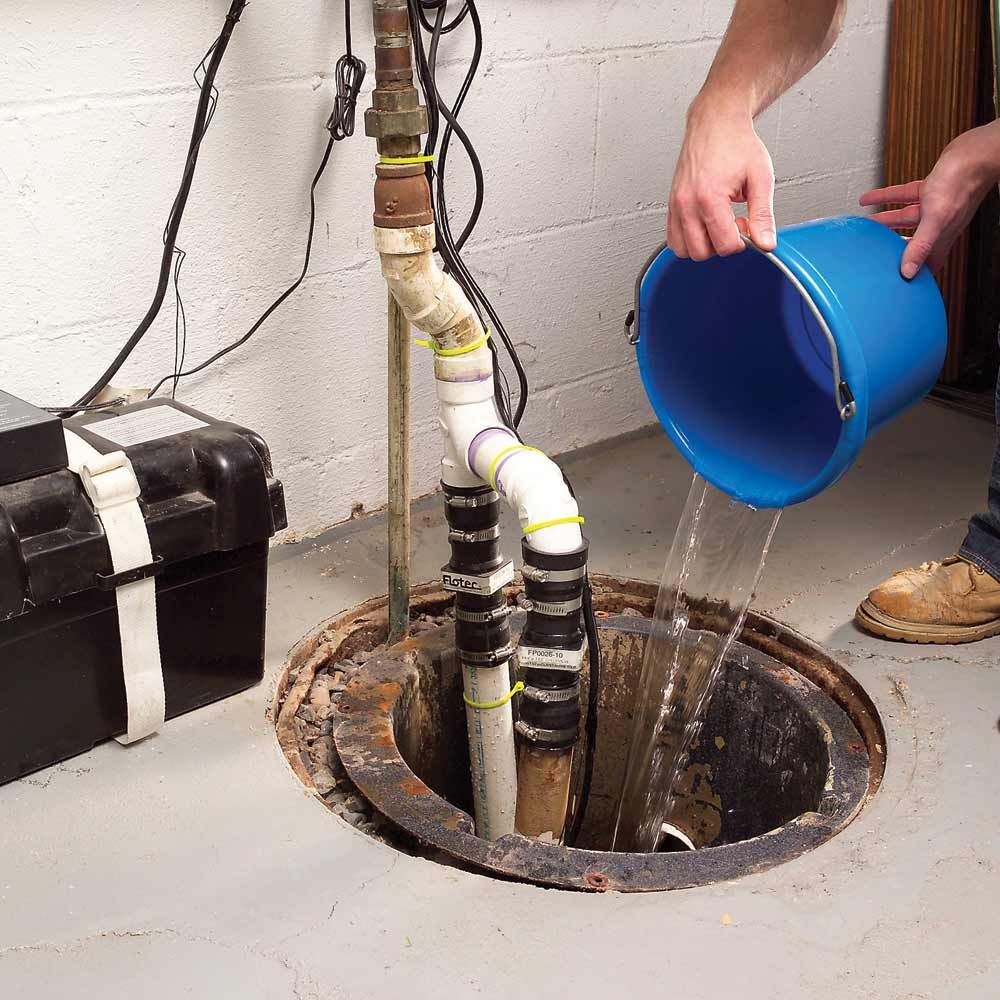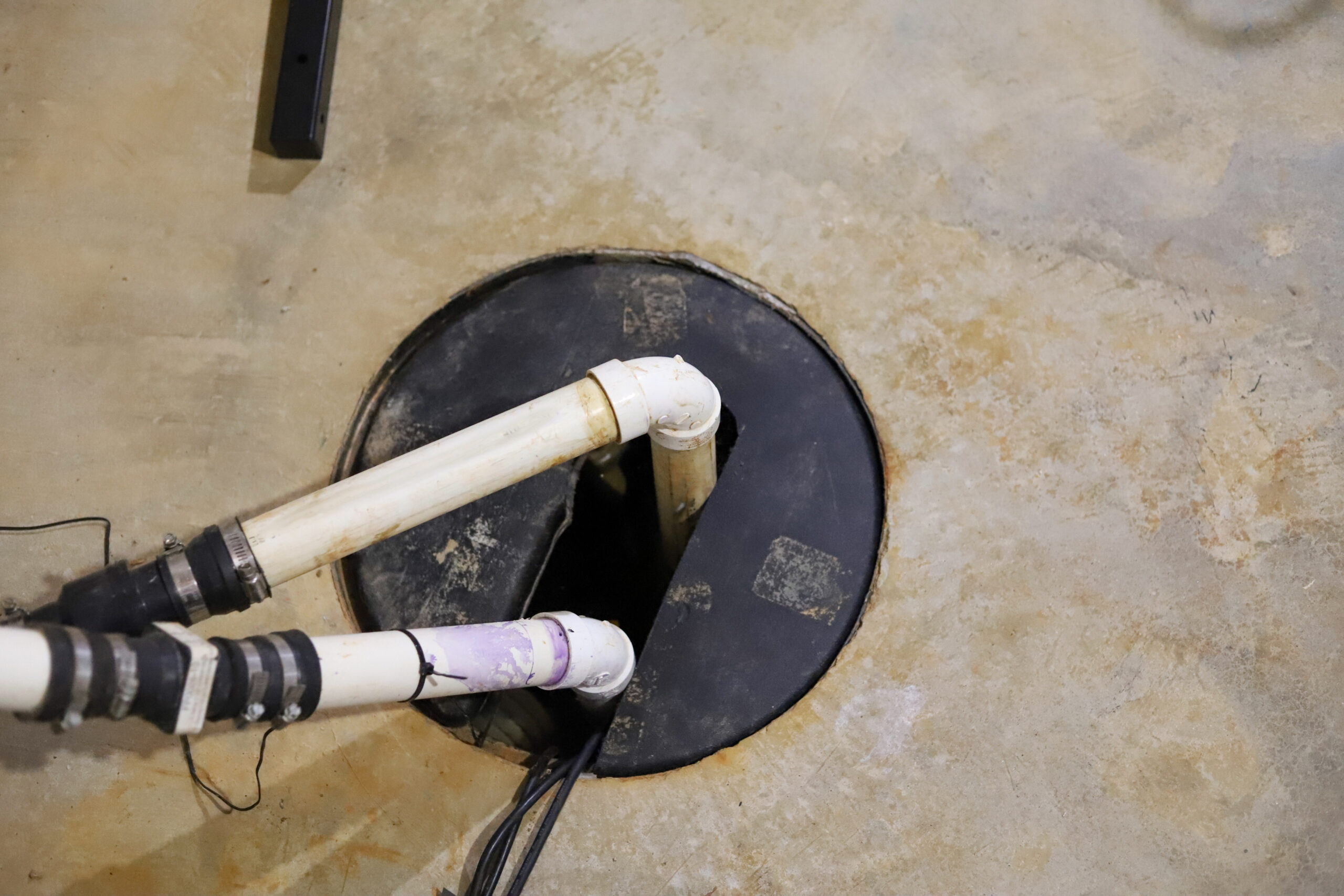Trusted Solutions for Caring for a Sump Pump
Trusted Solutions for Caring for a Sump Pump
Blog Article
What are your thoughts about Steps to Cleaning Your Sump Pump Properly?

Sump pumps are critical components in many homes, especially in areas vulnerable to flooding or too much dampness. They aid avoid water damages by effectively eliminating excess water from basements or crawl spaces. Nonetheless, like any other appliance, sump pumps need regular upkeep to guarantee they function properly when needed one of the most. Cleansing your sump pump is a crucial part of its upkeep, and understanding how to do it properly can conserve you from expensive repair services and potential calamities.
Introduction
Keeping a clean sump pump is essential for its appropriate functioning and longevity. Overlooking this essential task can lead to obstructions, malfunctions, and eventually, water damages to your building. Consequently, learning just how to cleanse a sump pump is vital for homeowners who rely upon these tools to keep their basements completely dry and protected.
Comprehending the Sump Pump
Before diving right into the cleaning process, it's important to have a basic understanding of exactly how a sump pump works. Commonly set up in a pit or container below the cellar floor, a sump pump consists of numerous vital parts, including a pump, a float switch, and a discharge pipe. When water accumulates in the pit, the float switch triggers the pump, which then pumps the water out through the discharge pipe, away from the building's foundation.
Indicators of a Dirty Sump Pump
Knowing when your sump pump needs cleaning is essential for preventing possible malfunctions. Some common indicators that show a filthy sump pump consist of odd sounds during operation, reduced water circulation, and noticeable debris in the pit. If you notice any one of these signs, it's vital to clean your sump pump without delay to avoid any type of additional concerns.
Getting ready for Cleaning
Before you begin cleaning your sump pump, it's vital to take some security preventative measures. Beginning by shutting down the power to the pump to avoid any type of electrical crashes. In addition, wear suitable protective gear, such as gloves and safety glasses, to secure on your own from dirt, debris, and potential pathogens.
Detailed Overview to Cleaning a Sump Pump
Shutting Off the Power
Begin by detaching the power supply to the sump pump to prevent any kind of mishaps while cleansing.
Getting Rid Of Debris and Dirt
Make use of a pail or an inside story to eliminate any noticeable particles, dirt, or sediment from the sump pit. Dispose of the debris correctly to stop it from blocking the pump or the discharge pipeline.
Cleaning up the Pump and Float Switch
As soon as the pit is clear of particles, meticulously remove the pump from the pit. Evaluate the pump and the float switch for any indications of damages or wear. Utilize a soft brush or cloth to cleanse the surfaces and remove any type of accumulated gunk.
Flushing the System
After cleaning the pump and float switch, purge the sump pit with tidy water to remove any type of continuing to be dust or sediment. This will help make certain that the pump runs smoothly and successfully.
Looking For Proper Performance
Before reinstalling the pump, execute a quick test to make sure that the float switch triggers the pump properly. Put some water right into the sump pit and observe the pump's procedure. If whatever is operating properly, you can reassemble the pump and reconnect the power supply.
Upkeep Tips to Maintain Your Sump Pump Clean
Along with routine cleaning, there are several upkeep suggestions you can follow to maintain your sump pump in ideal condition:
Verdict
Cleansing your sump pump is a critical aspect of its upkeep and guarantees that it runs effectively when you need it one of the most. By following the steps detailed in this guide and integrating routine maintenance into your regimen, you can expand the lifespan of your sump pump and protect your home from water damages.
6 STEPS ON HOW TO CLEAN A SUMP PUMP PROPERLY
UNDERSTANDING SUMP PUMPS
Your sump pump plays a crucial role in protecting your home by managing and removing excess water. It primarily functions as a “shield”, guarding your basement against the damaging effects of water accumulation. The pump is housed in a sump pit in the lowest part of your basement, and its job is to pump out any water that collects there.
During heavy rainfalls or when snow melts rapidly, water can infiltrate your basement, posing potential risks like flooding, structural damage, and harmful mold growth. Here, the sump pump springs into action, pumping out the intruding water and directing it away from your home.
SAFETY FIRST
Before cleaning, remember to prioritize safety. Disconnect the sump pump from the power source to prevent any accidental electric shocks. Also, wear sturdy gloves to protect your hands from any sharp or dirty components within the pump.
REMOVE THE SUMP PUMP
After ensuring your safety, the next step is to remove the sump pump from its pit. Doing this might require careful maneuvering as you don’t want to damage any pump components. Once removed, clean the sump pit to remove any accumulated debris or sludge.
INSPECT THE PUMP
Inspect the pump for any visible signs of wear or damage. Check the power cord, float switch, and impeller housing. If any components look worn out or damaged, consider replacing them to ensure optimal performance.
CLEAN THE PUMP
Thoroughly clean the pump with warm, soapy water. Make sure to rid it of any dirt, gravel, or other debris that might impede its performance. You can use a toothbrush to clean the small, hard-to-reach parts of the pump.
REINSTALL THE SUMP PUMP
Reinstall the pump into the sump pit Make sure it’s positioned correctly to remove the water effectively Once it’s back in place, reconnect it to the power source TEST THE PUMP
Finally, pour some water into the pit to ensure the pump works correctly. It should start automatically and begin pumping out the water; if it doesn’t, check the power source and the positioning of the pump.
Remember, while cleaning your sump pump is an essential part of home maintenance, hiring a professional plumber for a thorough inspection and cleaning at least once a year is also important. This will ensure that your pump is in optimal condition, ready to protect your home from potential water damage.
BEST PRACTICES FOR CLEANING SUMP PUMP DISCHARGE PIPES
Regular Inspection: Regularly inspect your discharge pipes, especially during heavy rainfall or snowmelt periods. Look for any signs of blockage or damage. Early detection of problems can prevent serious issues down the line. Periodic Cleaning: Over time, sediment and debris can accumulate in the discharge pipes, impeding the flow of water. Regular cleaning helps keep the pipes clear and functioning efficiently. You can use a high-pressure water jet to effectively clean the pipes. Insulation During Winter: In colder climates, discharge pipes can freeze, blocking the outflow of water. Protect your discharge pipes from freezing temperatures by insulating them with foam pipe insulation. This will ensure the sump pump can continue to discharge water even in freezing conditions. Proper Positioning: The discharge pipe should be positioned to direct water away from your home’s foundation. Improper positioning can lead to water seeping back into the basement. Ensure the pipe is long enough and angled correctly. Installation of a Check Valve: A check valve prevents water from flowing back into your sump pit after the pump has pushed it out. Installing a check valve helps maintain the efficiency of your sump pump and reduces the risk of flooding. Minimize Pipe Turns: Every curve or turn in the discharge pipe can decrease the efficiency of water flow. By minimizing turns and bends in your discharge pipe, you can increase the efficiency of your sump pump. https://www.fullspeedplumbing.com/how-to-clean-a-sump-pump-properly9999/

I'm certainly very involved in Cleaning & Maintenance Tips for Your Home's Sump Pump and I hope you appreciated the entire post. If you please set aside a second to share this blog entry if you enjoyed it. Thanks so much for taking the time to read it.
Source Report this page